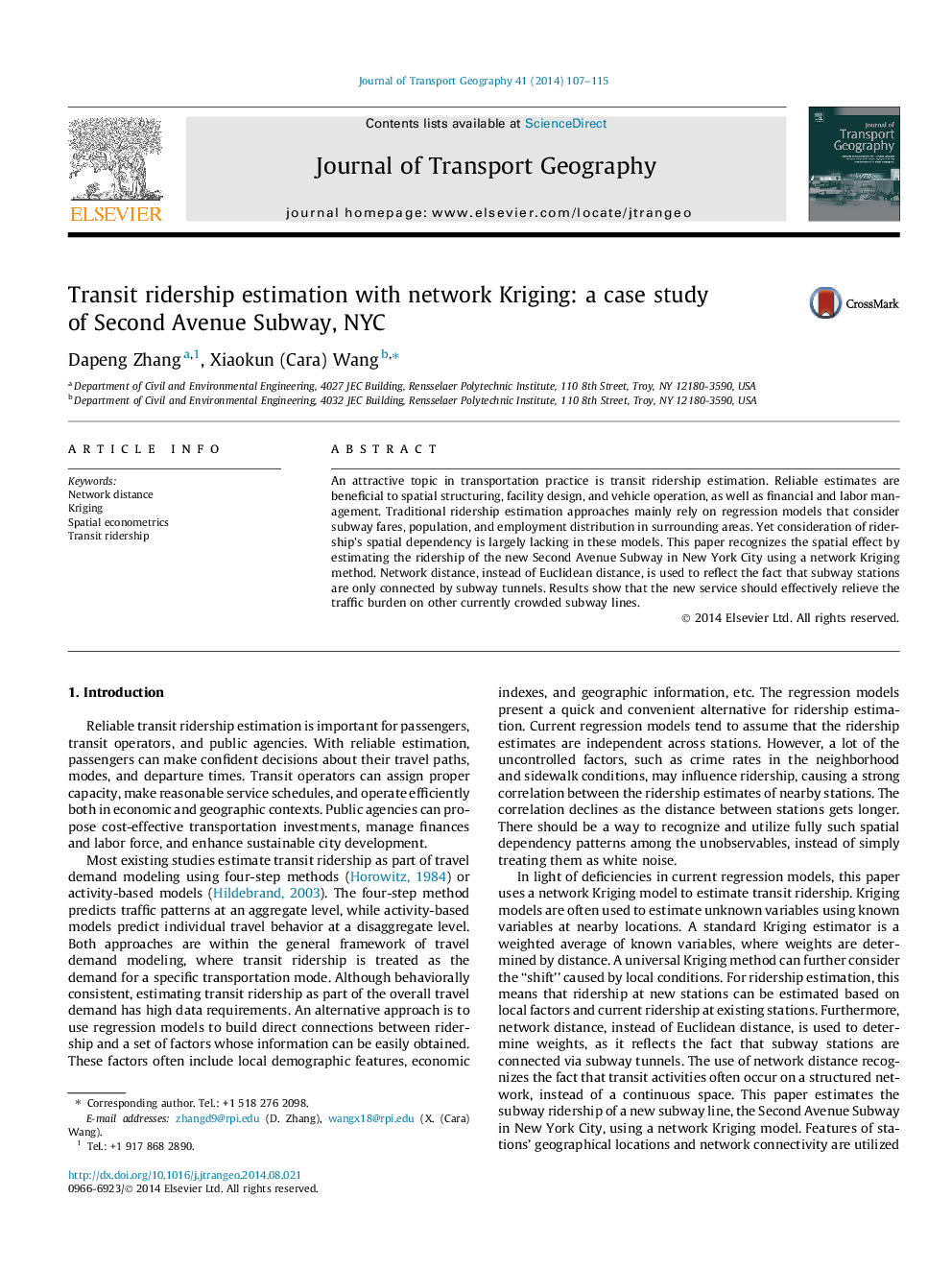| Article ID | Journal | Published Year | Pages | File Type |
|---|---|---|---|---|
| 7486003 | Journal of Transport Geography | 2014 | 9 Pages |
Abstract
An attractive topic in transportation practice is transit ridership estimation. Reliable estimates are beneficial to spatial structuring, facility design, and vehicle operation, as well as financial and labor management. Traditional ridership estimation approaches mainly rely on regression models that consider subway fares, population, and employment distribution in surrounding areas. Yet consideration of ridership's spatial dependency is largely lacking in these models. This paper recognizes the spatial effect by estimating the ridership of the new Second Avenue Subway in New York City using a network Kriging method. Network distance, instead of Euclidean distance, is used to reflect the fact that subway stations are only connected by subway tunnels. Results show that the new service should effectively relieve the traffic burden on other currently crowded subway lines.
Related Topics
Life Sciences
Environmental Science
Environmental Science (General)
Authors
Dapeng Zhang, Xiaokun (Cara) Wang,
